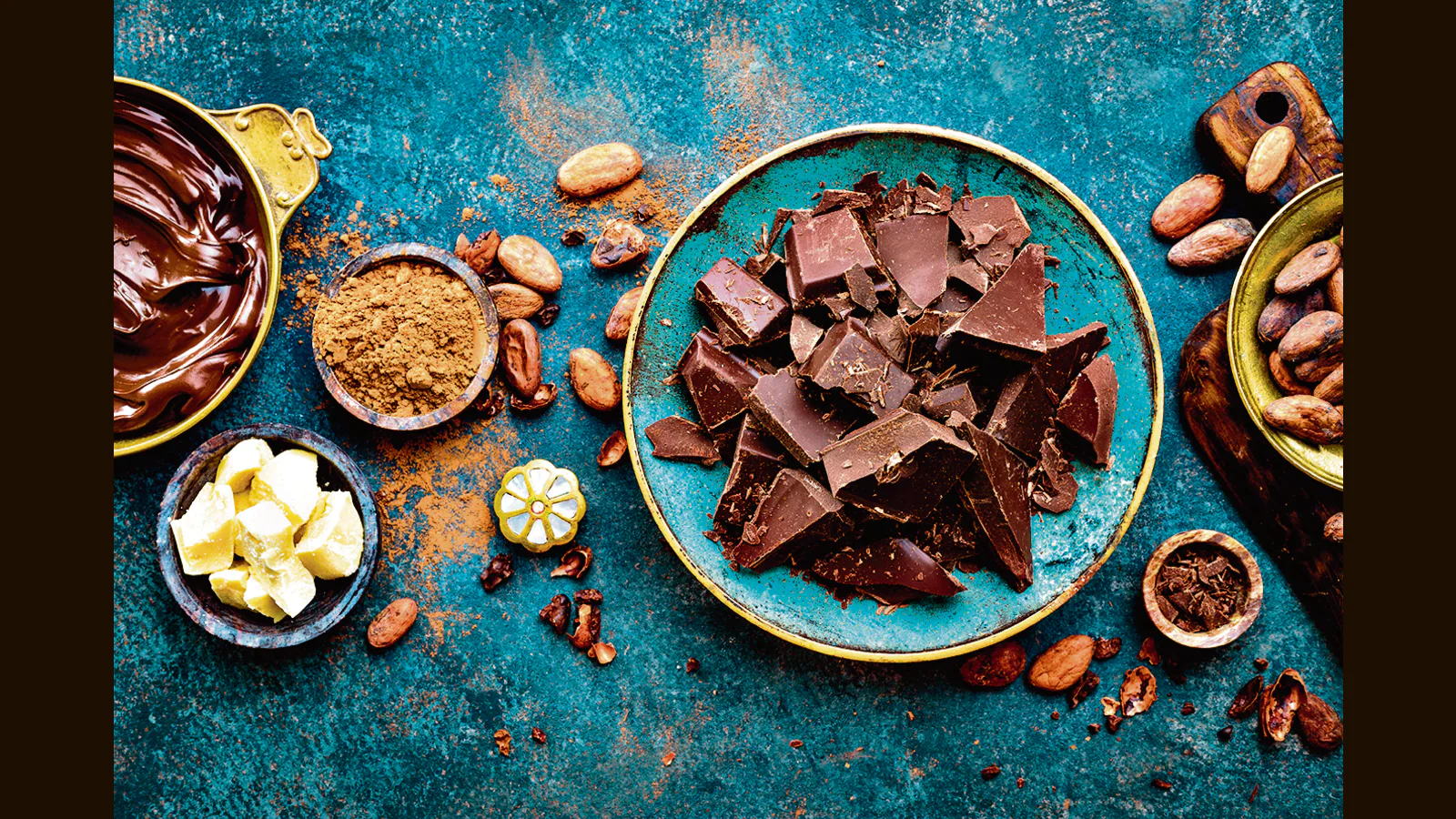[ad_1]
We groan about industrial food processing. “Food was so much healthier and tastier in the past,” we say. While this is true of certain things, it is certainly not true of chocolate.
Back in the 13th century CE, the Aztecs first roasted and ground cacao seeds to make a bitter, gritty, unsweetened drink that was reserved for royalty, as an aphrodisiac. Those bitter grounds were a far cry from the smooth, flavour-balanced bars available today.
The change began in Europe. Explorers such as the Italian Christopher Columbus and Spanish Hernan Cortes are credited with first taking cacao beans to Europe in the late 15th century. The Europeans also made beverages from the beans, but instead of using the exotic flavourings of the Aztecs — chilli, wild honey and the peppery achiote — they pivoted to sugar and vanilla.
By the 18th century, hot chocolate (the drink) had become quite popular. But solid chocolate, then a crude bar made of ground cacao seeds mixed with sugar, found few takers. It still had a gritty, crumbly texture you could feel in your mouth.
Then three things happened that catapulted solid chocolate to great success.
First, in 1828, the Dutchman Coenraad Van Houten invented a screw press that could press the cacao bean and separate it into two components: cocoa powder and cocoa butter. Van Houten was thrilled about the cocoa powder and sold it for use in hot chocolate. It was only about two decades later that the value of the cocoa butter became apparent. In 1847, an English chocolate-maker named Joseph Fry II added cocoa butter to cocoa paste, and the gritty chocolate bar turned into a smooth treat.
About 30 years later came the next revolutionary change: milk powder. Liquid milk has too short a shelf life to be used in chocolate bars. But in 1876, Swiss confectioner Daniel Peter decided to try milk powder (which had already been around for some years at this point). The milk tamed the bitterness of the dark chocolate and made the chocolate bar milder.
Two years later came the third revolution. In 1888, Swiss chocolate-maker Rodolphe Lindt invented the conching machine, which could slowly grind a chocolate mixture for days, reducing the size of the average chocolate particle from 300 microns to about 20 microns (for perspective, a human hair is about 75 microns wide). This finely ground chocolate could now be tempered and moulded, and the result was a bar that was creamier and melted in the mouth.
Fast-forward to today. Is the average chocolate bar made with the same techniques the Swiss perfected? In some cases, the answer is yes. But when it comes to the more affordable chocolate bars, the recipe has changed dramatically.
In order for a bar to qualify as “chocolate”, the FSSAI (Food Safety and Standards Authority of India) mandates that no fat other than cocoa butter make up more than 5% of the finished product. But cocoa butter is expensive. So some manufacturers add hydrogenated oil and vegetable fat; some add so much of these, in fact, that their bars no longer qualify as chocolate and instead are sold under tags such as “chocolatey”, “milky” or “choclairs”.
Now, even with the right amount of cocoa butter, an affordable chocolate bar for the mass market would be a slender thing. So some chocolate makers keep the cocoa butter ratio intact, but use sugar, their cheapest ingredient, to fluff out the product. Sugar is used to create fillings such as caramel, nougat, marshmallow. Even the air whipped into the sugar matrix is used to create volume. Some bars also use wheat-flour biscuits or wafers to add bulk.
The result is that a “good” chocolate bar, one that showcases the chocolate itself, is always slimmer and lighter than a mass-market one of the same price. It’s also why the less expensive chocolate bars are invariably sweeter.
Meanwhile, even in the pure chocolate bars, some companies use more sugar than is needed. This is to cover up for the poor quality of beans, or for processing errors such as over-roasting of the beans. If, in a 100 gm serving, more than 50 gm (or over half the bar) is “Added Sugars”, then the bar is compensating for something that didn’t turn out right.
A company that handles its chocolate well proudly posts its cocoa content on the front (eg, 70% cocoa). Find one you like with that kind of ratio and a low sugar count (ideally under 25%) and you will have found a product worthy of the tree’s scientific name: Theobroma cacao, from the Greek term for “food of the gods”.
Enjoy unlimited digital access with HT Premium
Subscribe Now to continue reading

[ad_2]
Source link


brand cialis online indomethacin, aminolevulinic acid topical
Commissar Goliath cialis 5mg online
Men with psychoses were significantly hyperactive across the circuitry and by FWE correction in aHYP d If so, this Heaven Extinguishing Corpse God really did this